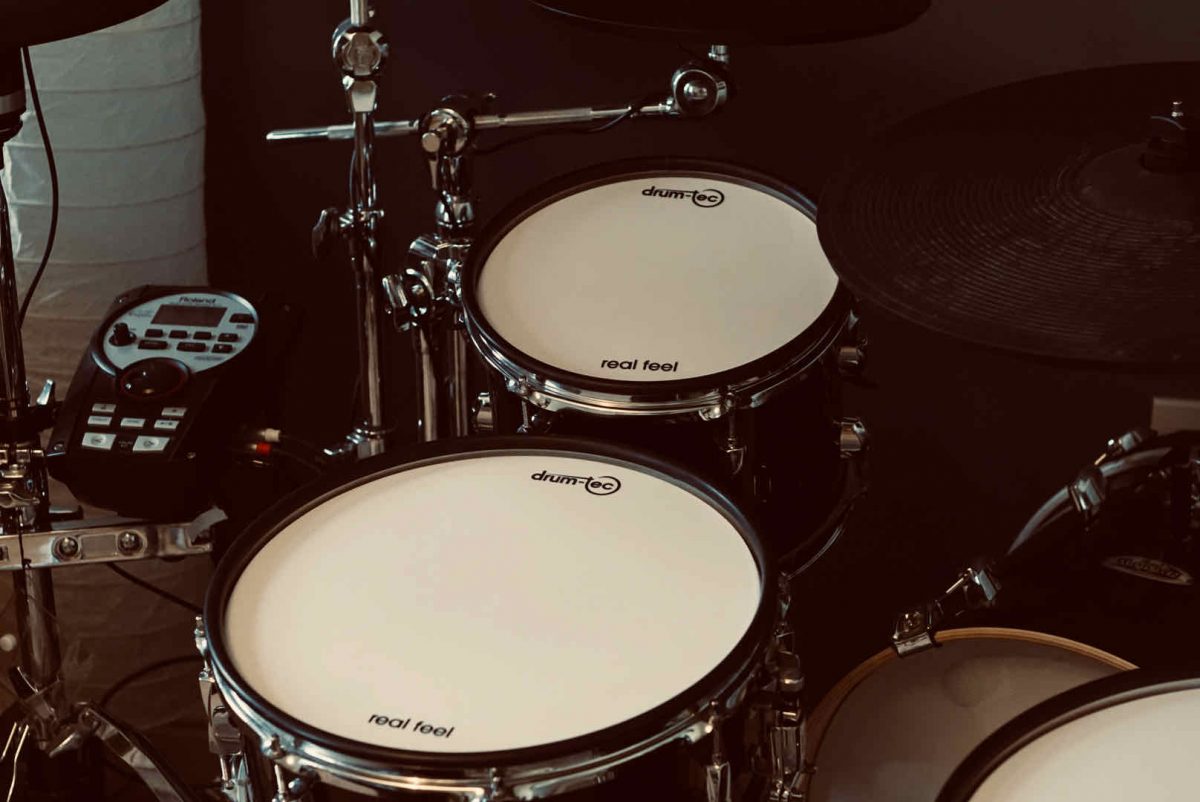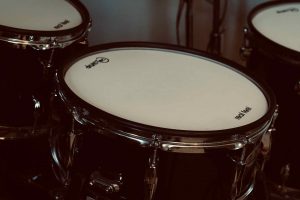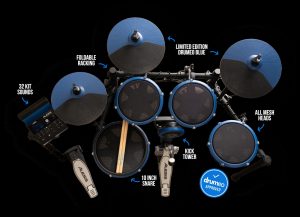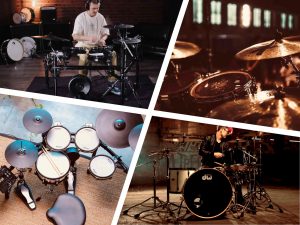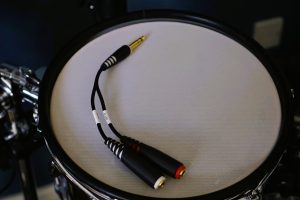Mesh heads are a key component of any modern eDrum kit, having replaced rubber pads on the majority of electronic drum kits. In this guide, we take a look at how to choose the best mesh drum heads, whether you’re looking to replace a work out head for an existing drum pad, or choosing parts for an acoustic-to-electronic drum conversion. Read on for our tips on choosing mesh heads for electronic drums!
Recommended mesh drum heads
Skip to our summaries for each featured mesh drum head:
What’s the difference between 1, 2 and 3-ply mesh heads?
Mesh drum heads come in different varieties based on the number of plys, or layers, they have. Mesh heads feel different to play depending on how many plys they have:
- A single ply mesh head has one layer of mesh and is very bouncy and the least durable type. While they can be cheap, they don’t feel like real drum heads. They are usually best avoided as batter heads, but can be used as resonant heads on an A-to-E drum conversion.
- A twin-ply head is made from two layers of mesh and is less bouncy than a single ply head. 2-ply heads are the most common type of heads on eDrums, used on most Roland drum pads under 14-inches. 2-ply heads provide a good compromise between springiness and noise.
- Triple ply heads are the least springy type of mesh head and only slightly more springy than real acoustic drum heads. However, they tend to be slightly louder to play than single or dual ply heads, and can reduce the sensitivity of your drum triggers slightly.
How to choose the right mesh drum heads
The type of mesh drum head you choose depends on what compromise you want to make between springiness and noise. Three-ply heads are my preferred head in terms of playing feel, but they are slightly louder than two-ply heads.
When choosing mesh heads, consider the size and type of eDrums you have:
- 3-ply mesh heads work on any size of drum.
- For 12-inch drums or smaller, 2-ply heads can provide a good compromise between price and springiness.
- If you have Roland drum pads, 2-ply heads will be a like-for-like replacement (except for the 14-inch digital snare and 14-inch VAD floor toms)
- For 13-inch or larger drums, 3-ply heads do a better job at controlling springiness
- For bass drums 16-inches or larger, pick a 3-ply head and apply a patch to protect it. If your bass drum is an acoustic to electronic conversion, then you can also stuff the drum with pillows to reduce the rebound effect.
- 1-ply heads are very springy on any type of eDrum and don’t offer a great playing experience, but make up for this with lower noise.
Of course, you can deviate from this based on your preferences or budget. There’s no reason why you can’t use a triple ply head on a 10-inch drum, for example.
Best 3-ply mesh heads
The following 3-ply options are basically identical, and may well be made in the same factory – the only difference is the branding and additional design options on the Drum-tec version. My advice is to check prices for all three brands shipped to your location and go with the cheapest ones, as you can’t really go wrong with any of these 3-ply heads!
Drum-tec Real Feel mesh heads

I currently use Real Feel mesh heads from Drum-tec on my DIY eDrum kit and I’m really impressed with their feel and responsiveness. Despite the name, they won’t feel exactly like real acoustic drum heads, but they get about as close as you can get with mesh drum heads.
These heads also come in three different designs that imitate real drum heads. The standard all-white head looks a bit like a regular coated drum head. But you can also choose the Black Belt version, which looks a bit like a coated Remo Pinstripe or Powerstroke head. Alternatively, you can get these heads in black, which look a bit like Evans Onyx acoustic drum heads.
The only real downside of the Real Feel range is the cost, with a 12-inch head costing €34 and 13-inch at €43. Shipping to the USA costs €35, so it is most cost effective to buy a full set of heads for your kit. Shipping is cheapest in Europe and costs vary by country.
Jobeky Prestige 3-ply mesh heads
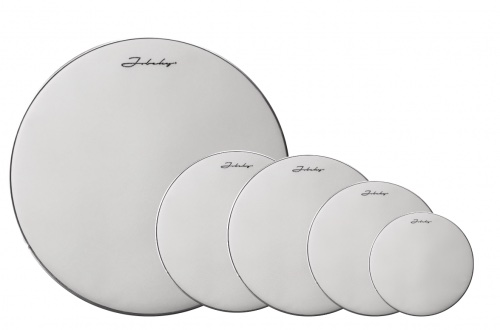
The Jobeky heads look and feel identical to the Drum-tec heads, aside from the branding. These heads feature a Jobeky logo at the rim and are slightly more minimal than the Drum-tec heads, which have both a Drum-tec and Real Feel logo.
Jobeky are UK-based, and therefore tend to work out cheaper than drum-tec after Brexit in the UK. If you’re in the USA, be sure to check the total cost for both brands including shipping, and go with the cheaper of the two.
SpareDrum 3-ply mesh heads
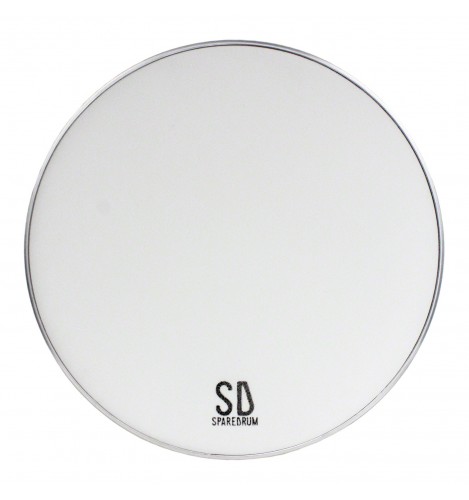
Taiwanese brand Spare Drum is another that uses the same design as the Drum-Tec and Jobeky heads. However, these appear to be harder to find, since the company sells mostly to drum makers (and may actually be the original company behind this type of drum head). If you find these heads available in your country, they are worth considering, especially if they come in cheaper than the Drum-tec or Jobeky variants.
Best 2-ply mesh heads
Two-ply heads are the standard on the majority of Roland drum pads, and tend to work best on smaller drums up to 12-inches in diameter. They are typically a bit more springy than 3-ply heads, and as a result don’t work quite as well on larger drums, where that springiness is magnified somewhat as opposed to smaller drums. However, one benefit of 2-ply heads is they can be slightly quieter than 3-ply heads.
Two-ply heads are a good option as a like-for-like replacement on your existing Roland drum pads, if they’ve worn down over time.
Roland PowerPly Mesh Heads
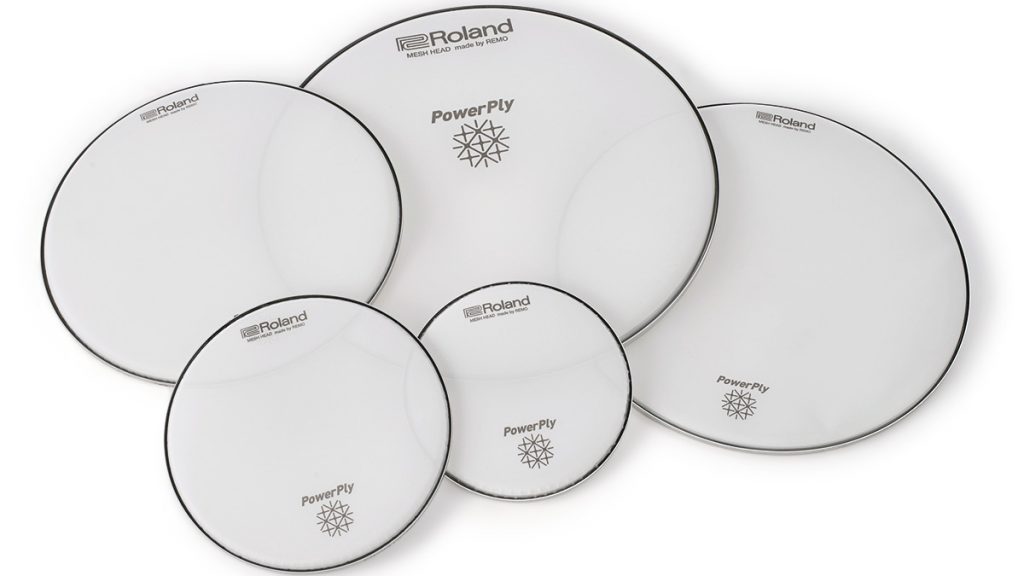
Roland PowerPly heads are the same as those found on Roland drum pads out of the box, just with different branding. Until this range came out in 2016, Roland mesh heads were only available as a spare part directly from Roland. Now, this range allows you to either replace a mesh head on your Roland kit, replace the head from a different brand of eDrum, or on an electronic drum conversion.
The downside of these heads is the relatively high price, since you can usually pick up a set of 3-ply heads for the same money. My recommendation is to use these heads if you’re replacing a head on a Roland eDrum to retain the same playing feel, but if you have any other type of eDrum, consider shopping around.
Drum-tec Design Series
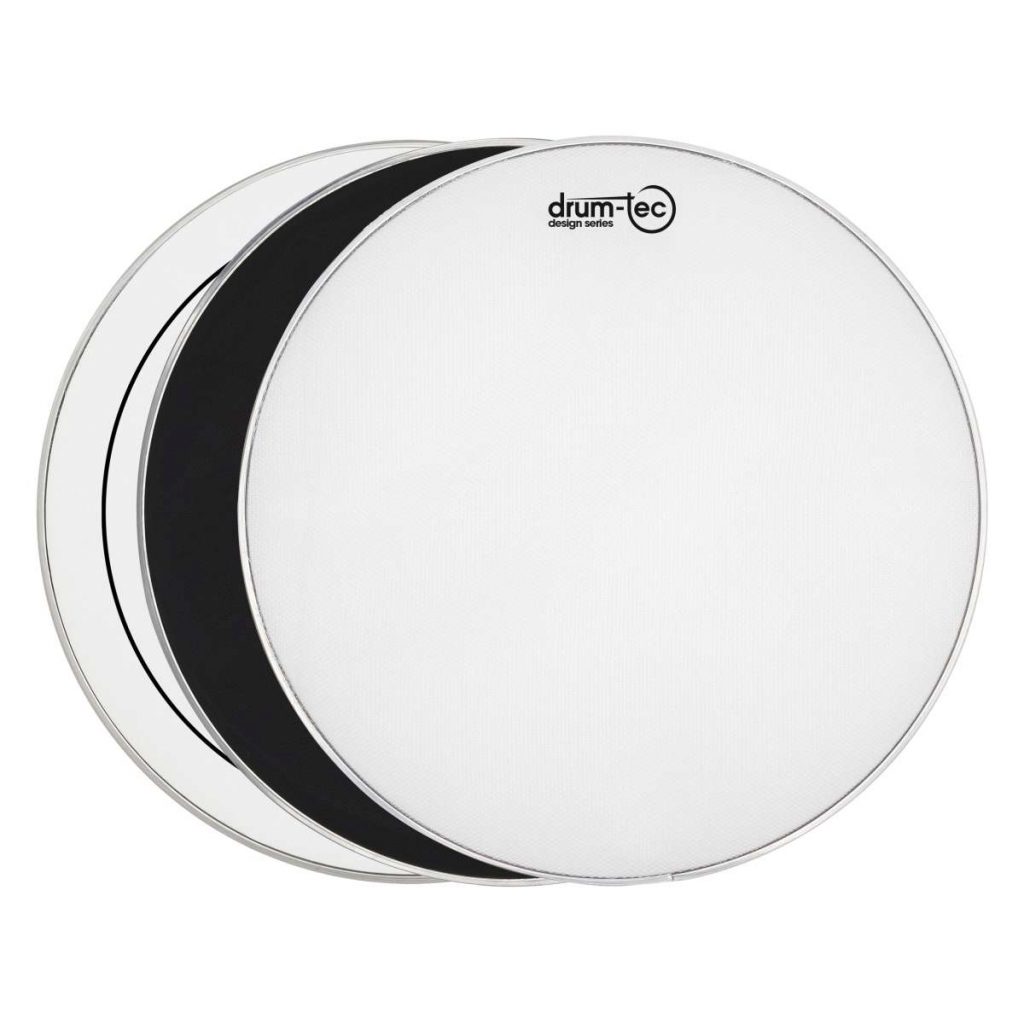
Drum-tec’s Design Series heads are its 2-ply mid-range mesh head and feel very similar to Roland PowerPly heads. They are slightly cheaper and quieter than the Drum-tec Real Feel heads, but make up for this with slightly lower volume.
If you were planning to buy Roland PowerPly heads but can get the Design Series heads cheaper, then they are worth considering. However, if your choice was between the Design Series and Real Feel heads, I would step up to Real Feel for the better playing experience, unless limiting the noise your eDrums make is a real issue for you.
Best single-ply mesh heads
Single-ply heads are generally best avoided as batter heads as they are excessively springy and less durable than two or three-ply heads. However, they can be good as resonant heads on an A-to-E converted drum, which helps to reduce volume compared to using an acoustic head. For this application, it’s best to go for the cheapest single-ply head you can find, as they simply serve as a placeholder to allow you to attach a bottom rim to your drum for a ‘complete’ look.
Alternatively, single-ply heads can be good for drummers who need a cheap way to make an acoustic drum quieter, for example to play drums at home without disturbing others.
WHD practice mesh heads
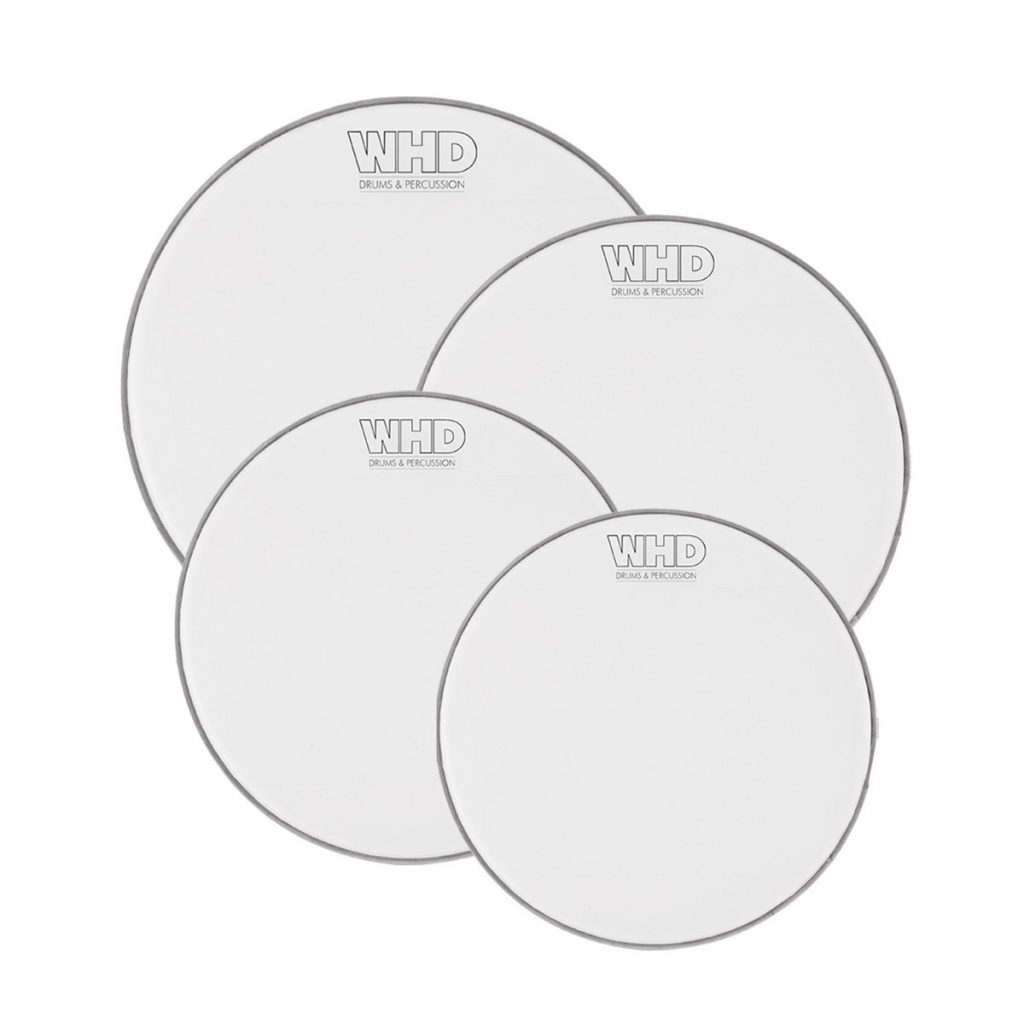
WHD practice mesh heads from Gear4Music are an affordable single-ply mesh head. They’re primarily designed as a practice tool to be fitted to an acoustic drum to make it quieter, but are also compatible with piezos or drum triggers.
These heads are best if you need a cheap mesh head with low volume, but won’t feel as great as two or three-ply mesh heads.
Remo Silentstroke mesh heads
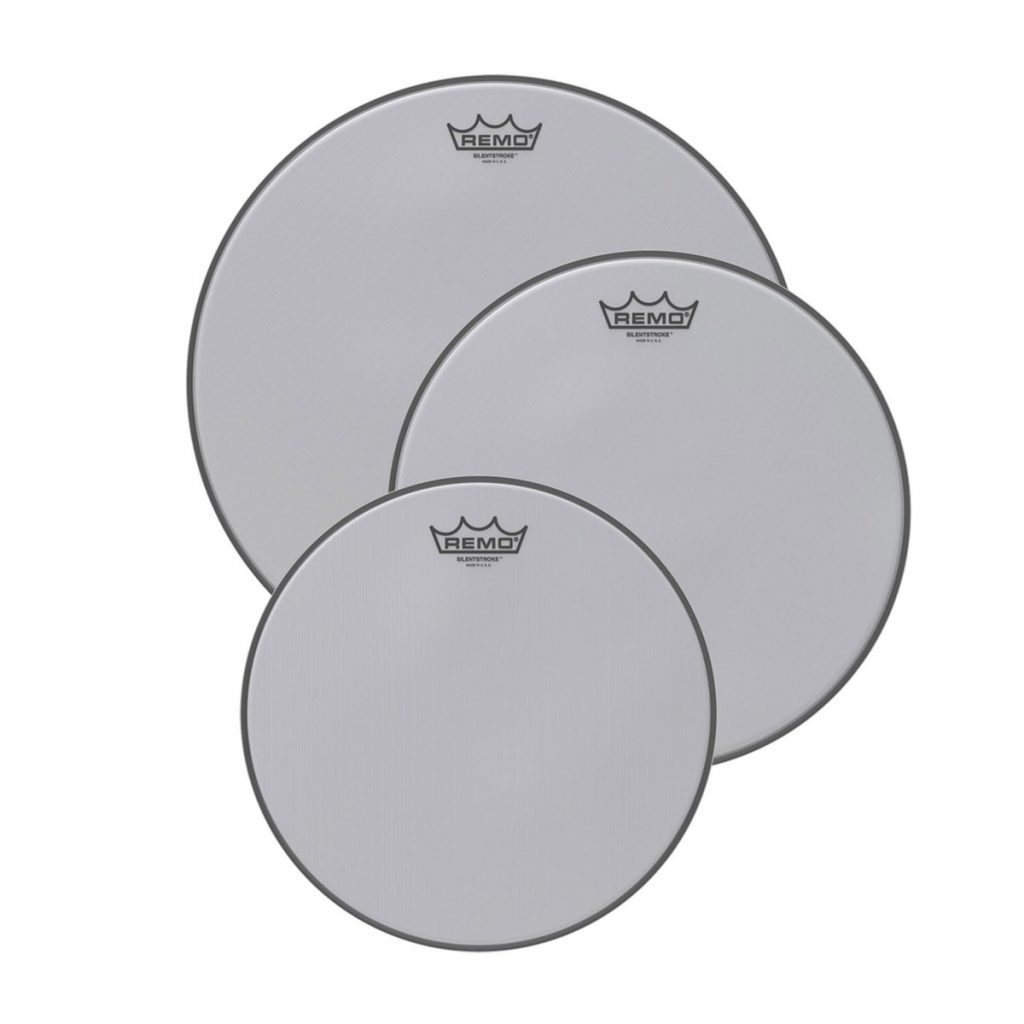
Remo Silentstroke mesh heads are a brand-name single ply mesh head. As with the WHD heads, they are going to be more springy than 2 or 3-ply heads but provide low volume. The downside is the Remo logo is very expensive, with the overall cost per head around twice that of the WHD heads. That said, some drummers swear by Remo Silentstrokes, for example Simon Edgoose writing for Mike Dolbear recommends them.
Evans Soundoff mesh drum heads
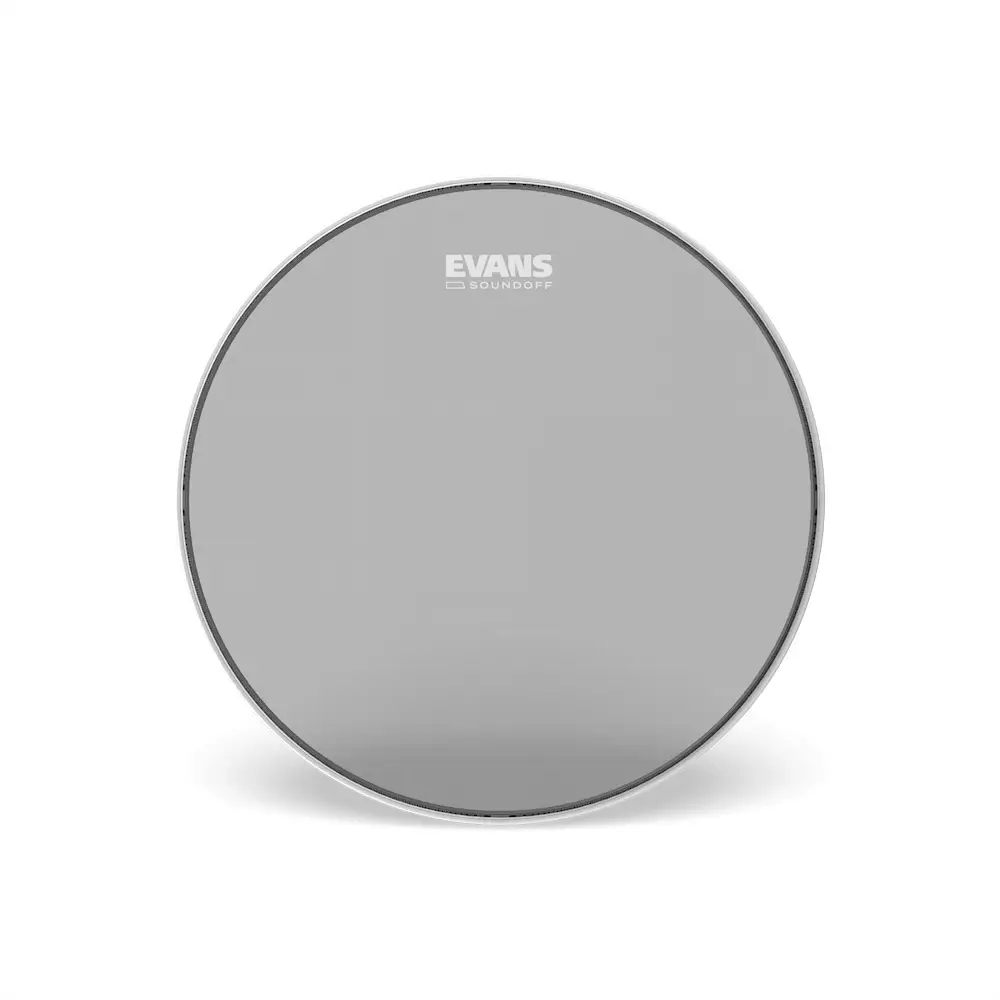
Evans Soundoff heads are the Evans’ version of the Remo Silentstrokes, with the main difference being that they come in a black finish. Again, they will be springy to play and less durable than two or three-ply heads, but make up for this with lower volume.
With their black finish, Evans Soundoff heads are worth considering as a resonant head on an A-to-E converted kit as an alternative to the standard white heads. This can look great against black drum shells or other dark finishes.
Tama mesh drum heads
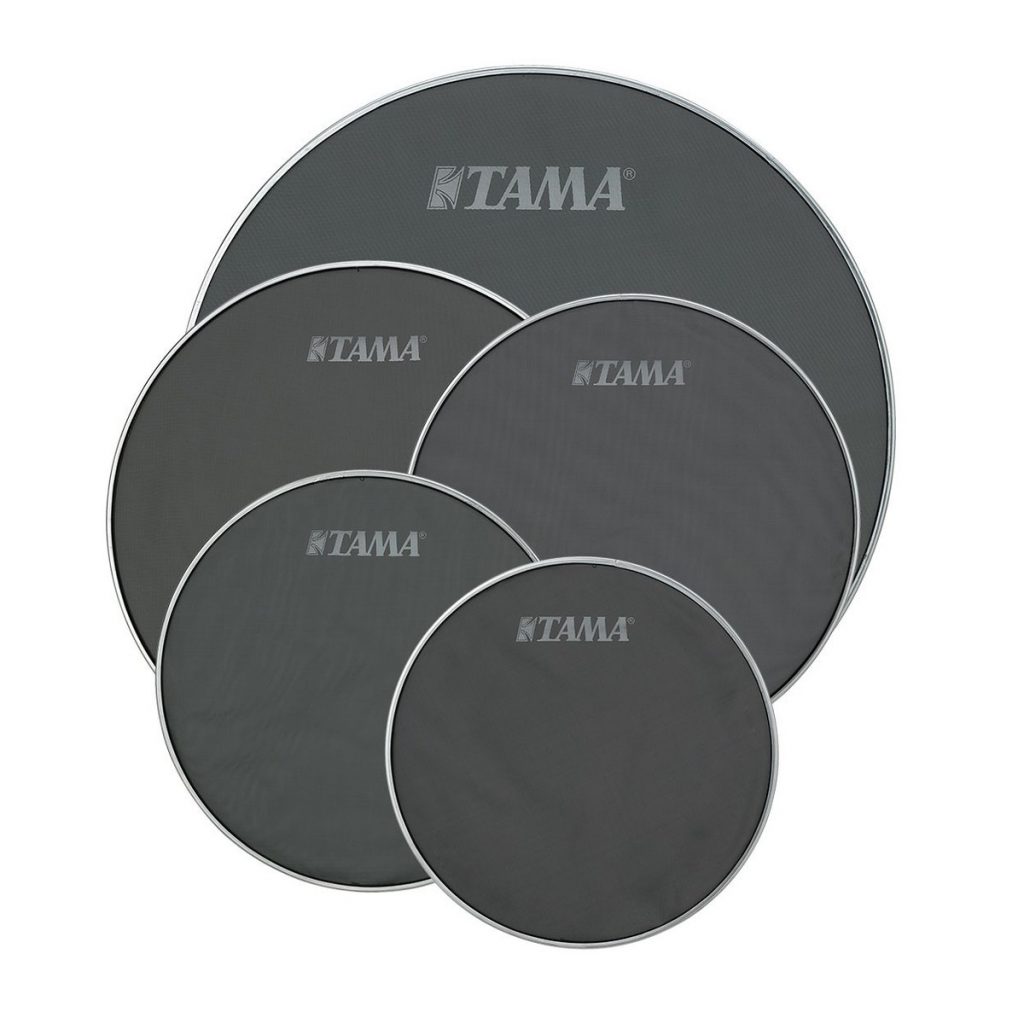
Tama is another big drum brand offering its own range of single-ply mesh drum heads, available in black with a prominent Tama logo at the top of the mesh. As with other single ply heads, these work great as resonant heads on an acoustic to electronic drum conversion. In particular, they’d make a great pairing for the range of Tama kits featured in our rundown of the best compact drums for A to E conversions.
This article contains affiliate links. If you purchase a product through certain links on our site, we may earn a small affiliate commission. Learn more about our adverts and why you can trust eDrumHub here.
